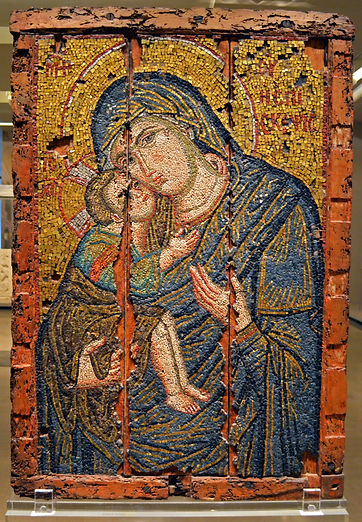Trigleia
Trigleia (modern Zeytinbağı, Turkey) was a city on the Bithynian coast of Propontis (modern Sea of Marmara). There are a several Byzantine churches and monasteries in the vicinity of Trigleia, including Pantobasilissa and the former church now known as Fatih Mosque.
The earliest mention of Trigleia as a locality is probably of around 800 and concerns a monastery of Trigleia. Toward the middle of the eleventh century Michael Psellos speaks of taking a ship at Trigleia in company with a monk whose conversation was anything but edifying. No further references appear to exist until the latter part of the thirteenth century.
When the Emperor Andronicus II resided at Lampsacus (1284), the purveyors of foodstuffs for his table made forays as far as Cius (Gemlik) and Trigleia, and confiscated chickens and piglets from the peasants. At the same time, with the development of maritime, especially Genoese, trade, Trigleia gained some prominence and, we assume, prosperity as an exporting center of wine and alum. The wine traffic is first mentioned in a 13th century Genoese document. Vino Trillie continued to be exported to Caffa as late as 1381-82, by which time Trigleia was surely in Turkish hands. The alum was mined at Uluabat (Lopadion) at the rate of 10,000 quintals per year and taken by land to Trigleia, whence it was shipped. As a result, Trigleia often appears in portulans and on early maps.
It is not known when Trigleia was captured by the Turks. About the year 1317, when Prousa (modern Bursa) was being besieged by Osman, the co-Emperor Andronicus III landed at Trigleia and was able to send provisions to the beleaguered city. It was still in Byzantine hands in 1337 when news was conveyed from there to Constantinople that a Turkish expeditionary force was about to attack the settlements on the northern shore of the Propontis. Prousa had already fallen in 1326 and Nicaea in 1331; Nicomedia was captured in that same year 1337. It is not likely that Trigleia, which was unfortified, would have held out much longer.
Sources
“Some Churches and Monasteries on the Southern Shore of the Sea of Marmara” by Cyril Mango and Ihor Ševčenko
Resources
Album of Byzantine Bithynia (Byzantine Legacy Flickr)





